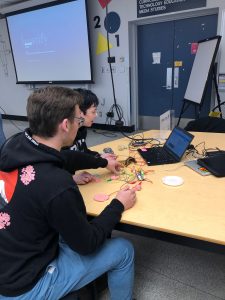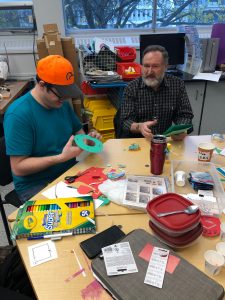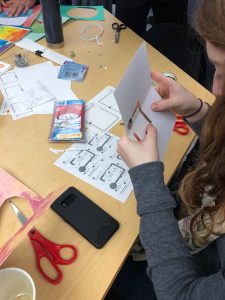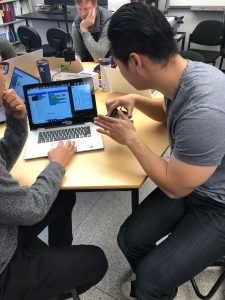Play-based, hands-on learning activities appeal to our creativity and our curiosity. When combined with specific prompts and tasks, they encourage children by providing greater success and a more rewarding experiences (McLean & Harlow, 2017) as they learn about the world around them.
When you combine a 9V battery with a handful of playdough and a few strategically placed mini-LED bulbs, anyone can safely learn the basics of circuitry. Before long, those same people might just take the lead, and soon enough they’re speaking knowledgeably about current, polarity, and conductivity and asking great questions of their own! More advanced students can extend their learning by co-constructing their understandings of series and parallel circuits, switches and more. Design challenges can support students creating toys and electrical devices or imagine the learning that might happen when high school chemistry students are challenged to create new recipes to increase conductivity or resistence and improve the texture, colour or consistency of the dough (McLean & Harlow, p. 128).
This week with the Technology Education Secondary cohort, we played as students and considered as teachers, how stations and play based learning might help to activate the students’ prior knowledge, engage students in constructing their understandings and provide an engaging hook and scaffolded learning opportunity for developing more complex understandings of circuits.
Using inexpensive familiar materials, teachers can prepare simple, fun, yet challenging hands-on activities for their students that can also provide a footing for learning down the road. By using the squishy circuits first, students play with concepts using materials that can be re-used multiple times. Following this play, they might then design and build a circuit using a given length of copper tape thus using design thinking skills, electrical know-how and mathematics.
In our session, we explored five stations. TCs were encouraged to consider how and what they were learning and relate this learning to curriculum including core competencies.
- Squishy Circuits (1 set available for loan from Ed Library – all you really need is playdough, batteries and LEDs – and a battery tester to provide students opportunity to troubleshoot)
- Makey Makey (1 available for loan from Ed Library)
- Paper Circuits
- Micro:Bits (2 kits of 10 available for loan from the Ed library)
- K-8 Robot (6 available for loan from Ed Library… remember to also borrow the microbits kit!)
Slides from our session:
https://prezi.com/view/OiwUhUMmhcS2gB7yyanU/
Honey, M. & Kanter, D. (2013). Introduction. In M. Honey & D. Kanter (Eds.), Design, make, play (pp. 1–6). New York, NY: Routledge, https://doi.org/10.4324/9780203108352.
McLean, M., & Harlow, D. (2017, June). Designing inclusive STEM activities: A comparison of playful interactive experiences across gender. In Proceedings of the 2017 Conference on Interaction Design and Children (pp. 567–574). New York, NY: ACM, https://dl.acm.org/citation.cfm?id=3084326






